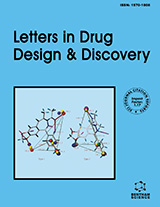Abstract
Background: Danggui Shaoyao San (DSS) is a well-known herbal formula, which has been widely used in the treatment of non-alcoholic fatty liver disease (NAFLD). However, the potential mechanisms of DSS for NAFLD remain unknown.
Objective: Our study aims to explore the active components and potential molecular mechanisms of DSS for the treatment of NAFLD.
Methods: In this study, network pharmacology and molecular docking were performed to predict the active ingredients, potential targets and molecular mechanisms of DSS for the treatment of NAFLD.
Results: The 28 active components and 27 potential targets of DSS associated with NAFLD were identified, and five components most closely associated with NAFLD were beta-sitosterol, kaempferol, hederagenin, 3β-acetoxyatractylone, and sitosterol. DSS was involved in regulating pathways in cancer, AGE-RAGE signalling pathway in diabetic complications, IL-17 signalling pathway, NAFLD, hepatitis B, apoptosis, and hepatitis C. Additionally, IL-6, Caspase 3, RELA, PTGS2, and JUN might be the potential targets of DSS for NAFLD treatment. In addition, the results of molecular docking indicated that kaempferol and beta-sitosterol compounds could bind to the important targets.
Conclusion: Our study systematically investigated the potential molecular mechanism of DSS for the treatment of NAFLD, which would potentially provide a new clinical approach for NAFLD.
Keywords: Danggui Shaoyao San, non-alcoholic fatty liver disease, pharmacology technology network, traditional Chinese medicine, NAFLD, Liver cells
Graphical Abstract
[http://dx.doi.org/10.1016/j.jhep.2014.12.012] [PMID: 25920090]
[http://dx.doi.org/10.3390/jcm10010036] [PMID: 33374435]
[http://dx.doi.org/10.1038/nrgastro.2017.109] [PMID: 28930295]
[http://dx.doi.org/10.1038/s41591-018-0104-9] [PMID: 29967350]
[http://dx.doi.org/10.1038/nrgastro.2016.3] [PMID: 26907882]
[http://dx.doi.org/10.1038/s41575-018-0094-6] [PMID: 30559444]
[http://dx.doi.org/10.1007/s13238-017-0436-0] [PMID: 28643267]
[http://dx.doi.org/10.1016/j.jceh.2019.03.002] [PMID: 31516268]
[http://dx.doi.org/10.1016/S0140-6736(08)61354-9] [PMID: 18930523]
[http://dx.doi.org/10.1142/S0192415X12500188] [PMID: 22419419]
[http://dx.doi.org/10.1016/j.jep.2021.114056] [PMID: 33771638]
[http://dx.doi.org/10.1155/2019/7465272] [PMID: 31355279]
[http://dx.doi.org/10.1016/j.biopha.2021.111408] [PMID: 33684693]
[http://dx.doi.org/10.1111/jcmm.15166] [PMID: 32189432]
[http://dx.doi.org/10.1016/j.jep.2016.05.023] [PMID: 27211015]
[http://dx.doi.org/10.1016/j.ijbiomac.2020.06.166] [PMID: 32569681]
[http://dx.doi.org/10.1038/srep26229] [PMID: 27189109]
[http://dx.doi.org/10.1002/fsn3.1581] [PMID: 32724586]
[http://dx.doi.org/10.4103/1673-5374.202946] [PMID: 28469657]
[http://dx.doi.org/10.1155/2015/731237] [PMID: 25784949]
[http://dx.doi.org/10.1155/2018/9595741] [PMID: 30510632]
[http://dx.doi.org/10.1155/2020/9701285] [PMID: 33062150]
[http://dx.doi.org/10.1155/2017/2945803] [PMID: 29259643]
[http://dx.doi.org/10.1038/nchembio.118] [PMID: 18936753]
[http://dx.doi.org/10.1038/nbt1007-1110] [PMID: 17921993]
[http://dx.doi.org/10.1016/j.compbiomed.2020.103825] [PMID: 32658730]
[http://dx.doi.org/10.1186/1758-2946-6-13] [PMID: 24735618]
[http://dx.doi.org/10.3390/ijms13066964] [PMID: 22837674]
[http://dx.doi.org/10.1016/j.jep.2017.01.002] [PMID: 28065780]
[http://dx.doi.org/10.1093/nar/gkaa1100] [PMID: 33237286]
[http://dx.doi.org/10.1093/database/bav028] [PMID: 25877637]
[http://dx.doi.org/10.1093/nar/gku1205] [PMID: 25428349]
[http://dx.doi.org/10.1093/database/baq020] [PMID: 20689021]
[http://dx.doi.org/10.1093/nar/gku1003] [PMID: 25352553]
[http://dx.doi.org/10.1093/bioinformatics/btm554] [PMID: 18006545]
[http://dx.doi.org/10.1093/nar/gkn923] [PMID: 19033363]
[http://dx.doi.org/10.1038/nprot.2016.051] [PMID: 27077332]
[http://dx.doi.org/10.1093/nar/28.1.235] [PMID: 10592235]
[http://dx.doi.org/10.1093/nar/gkw1118] [PMID: 27899599]
[http://dx.doi.org/10.1016/j.jep.2020.113020] [PMID: 32592886]
[http://dx.doi.org/10.1002/jssc.201900846] [PMID: 32112520]
[http://dx.doi.org/10.1016/j.biopha.2020.110702] [PMID: 32882583]
[http://dx.doi.org/10.1038/s41598-019-56320-2] [PMID: 31875004]
[PMID: 28216890]
[http://dx.doi.org/10.1021/acs.jafc.8b04555] [PMID: 30280897]
[http://dx.doi.org/10.1111/jam.13704] [PMID: 29356238]
[http://dx.doi.org/10.1186/s12944-019-1096-2] [PMID: 31351498]
[http://dx.doi.org/10.1016/j.taap.2005.04.004] [PMID: 16112156]
[http://dx.doi.org/10.1016/j.jphotobiol.2020.111825] [PMID: 32142995]
[http://dx.doi.org/10.1016/j.phrs.2015.05.002] [PMID: 25982933]
[http://dx.doi.org/10.3390/molecules24122277] [PMID: 31248102]
[http://dx.doi.org/10.3390/nu9010041] [PMID: 28067819]
[http://dx.doi.org/10.1038/s41419-020-02880-5] [PMID: 32792495]
[http://dx.doi.org/10.3389/fcell.2021.674103] [PMID: 34124059]
[http://dx.doi.org/10.1002/hep.31995]
[http://dx.doi.org/10.3390/metabo11030155] [PMID: 33800465]
[http://dx.doi.org/10.1155/2019/2151302] [PMID: 31641351]
[http://dx.doi.org/10.1002/hep.21373] [PMID: 17058223]
[http://dx.doi.org/10.1016/j.jhep.2018.11.034] [PMID: 30572006]
[http://dx.doi.org/10.1038/ni.2065] [PMID: 21772278]
[http://dx.doi.org/10.1016/j.jhep.2018.08.026] [PMID: 30218679]
[http://dx.doi.org/10.3748/wjg.v23.i20.3572] [PMID: 28611510]
[http://dx.doi.org/10.1080/13543776.2020.1703952] [PMID: 31825687]
[http://dx.doi.org/10.1053/j.gastro.2016.09.017] [PMID: 27658772]
[http://dx.doi.org/10.1016/j.jhep.2017.01.022] [PMID: 28167322]
[http://dx.doi.org/10.1038/s41418-018-0239-8] [PMID: 30778201]
[http://dx.doi.org/10.3390/ijms20071785] [PMID: 30974915]
[http://dx.doi.org/10.1016/j.jhep.2010.09.039] [PMID: 21147505]
[http://dx.doi.org/10.3748/wjg.v24.i25.2661] [PMID: 29991872]




























